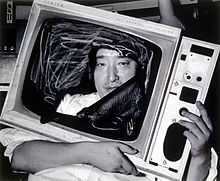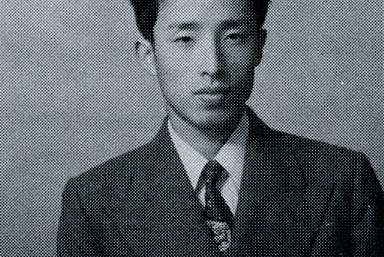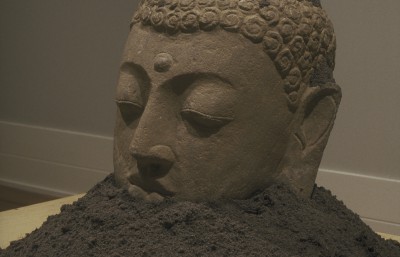
Buddha Watching TV Video Transcript:
Narrator: Nam June Paik was a Korean- American musician, composer, performance artist, and the father of video art. Seen through his eyes, conventional TV and video tape would never look the same. Nam June Paik began exploring the potential of electronics as art in the late 1950s. In one exhibition, the artist treated media equipment as art object, turning video monitors on their sides or face down. For another, he stacked TV sets in the form of the human figure, suspended them from ceilings, and arranged them on the floor in a garden-like setting. Then in 1965, Paik set to work creating video art. In 1974, Paik invented Buddha Watching TV. By 1997, he was still making variations on the theme. Picture a stone sculpture of the Buddha’s head resting on a mound of dirt and watching a TV. The TV is broadcasting the Buddha’s image via closed circuit. It looks as though the Buddha is contemplating himself. In the process the work juxtaposes an icon of individual contemplation with a medium of popular culture. It pits ancient meditation against modern technology. It presents the past and present, the sacred and the secular, the profound and the superficial. The artist’s lifetime quest: to explore how contemporary technology and traditional culture can make new artistic expressions possible.


